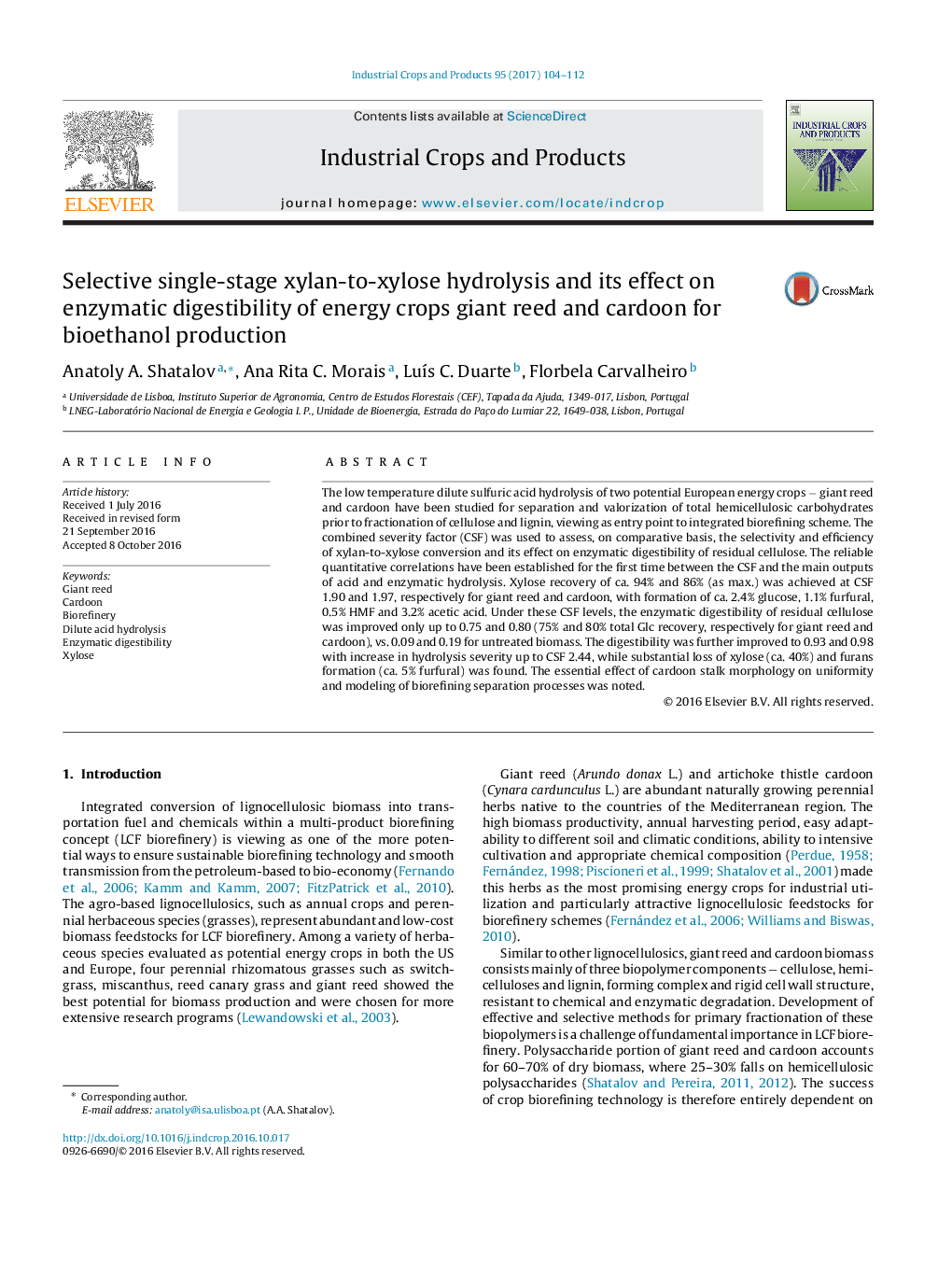| Article ID | Journal | Published Year | Pages | File Type |
|---|---|---|---|---|
| 4511940 | Industrial Crops and Products | 2017 | 9 Pages |
•Low temperature dilute acid hydrolysis is effective method for crop fractionation.•Hydrolysis severity (CSF) of 1.90–1.97 is optimal for maximum xylose recovery.•Crop digestibility increases to 0.75–0.80 after hydrolysis at CSF 1.90–1.97.•Rise of CSF to 2.44 provides 0.93–0.98 digestibility while causing 40% xylose loss.•Heterogeneity of cardoon stalks affects efficiency of separation processes.
The low temperature dilute sulfuric acid hydrolysis of two potential European energy crops − giant reed and cardoon have been studied for separation and valorization of total hemicellulosic carbohydrates prior to fractionation of cellulose and lignin, viewing as entry point to integrated biorefining scheme. The combined severity factor (CSF) was used to assess, on comparative basis, the selectivity and efficiency of xylan-to-xylose conversion and its effect on enzymatic digestibility of residual cellulose. The reliable quantitative correlations have been established for the first time between the CSF and the main outputs of acid and enzymatic hydrolysis. Xylose recovery of ca. 94% and 86% (as max.) was achieved at CSF 1.90 and 1.97, respectively for giant reed and cardoon, with formation of ca. 2.4% glucose, 1.1% furfural, 0.5% HMF and 3.2% acetic acid. Under these CSF levels, the enzymatic digestibility of residual cellulose was improved only up to 0.75 and 0.80 (75% and 80% total Glc recovery, respectively for giant reed and cardoon), vs. 0.09 and 0.19 for untreated biomass. The digestibility was further improved to 0.93 and 0.98 with increase in hydrolysis severity up to CSF 2.44, while substantial loss of xylose (ca. 40%) and furans formation (ca. 5% furfural) was found. The essential effect of cardoon stalk morphology on uniformity and modeling of biorefining separation processes was noted.
Graphical abstractFigure optionsDownload full-size imageDownload as PowerPoint slide
